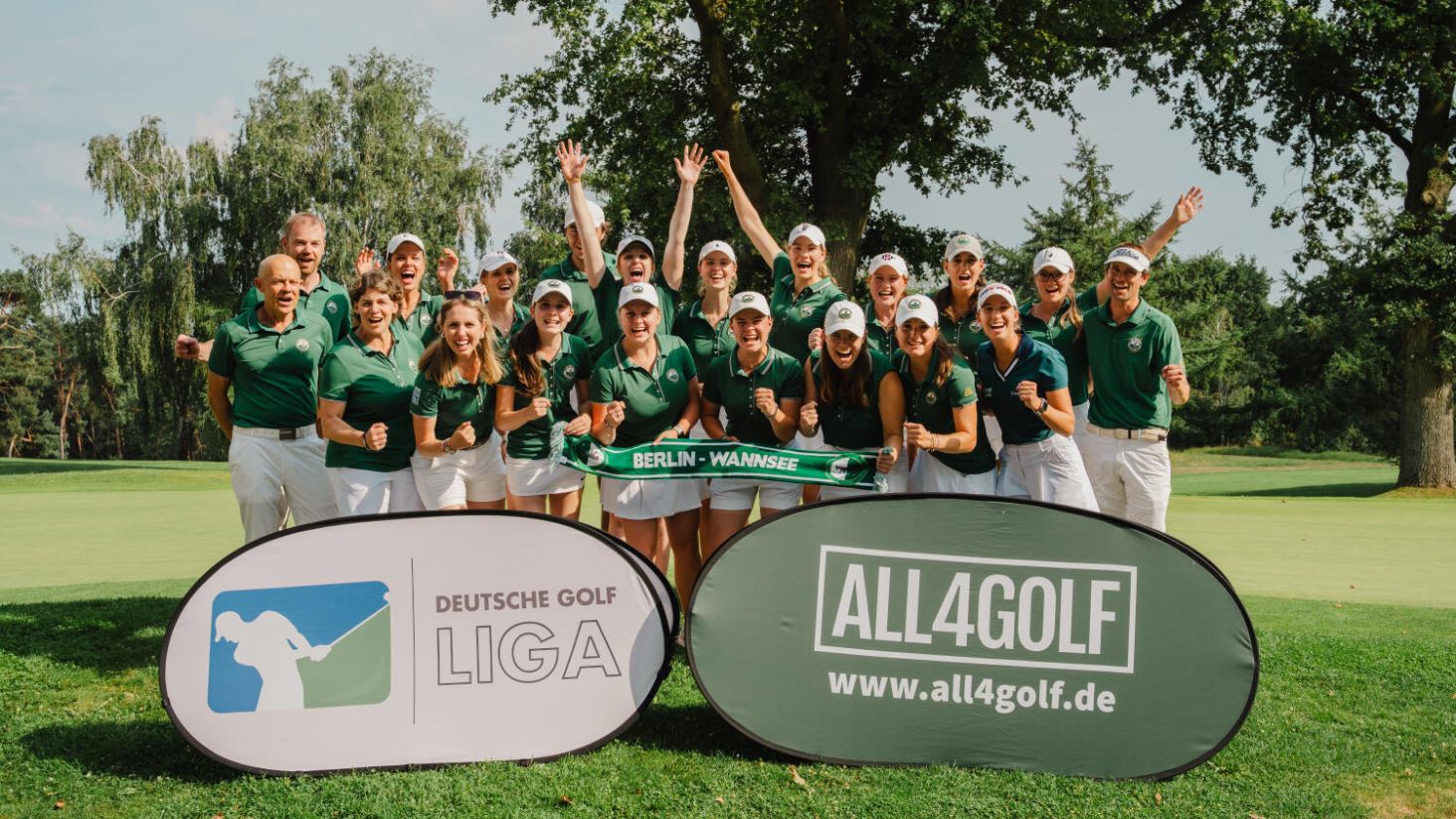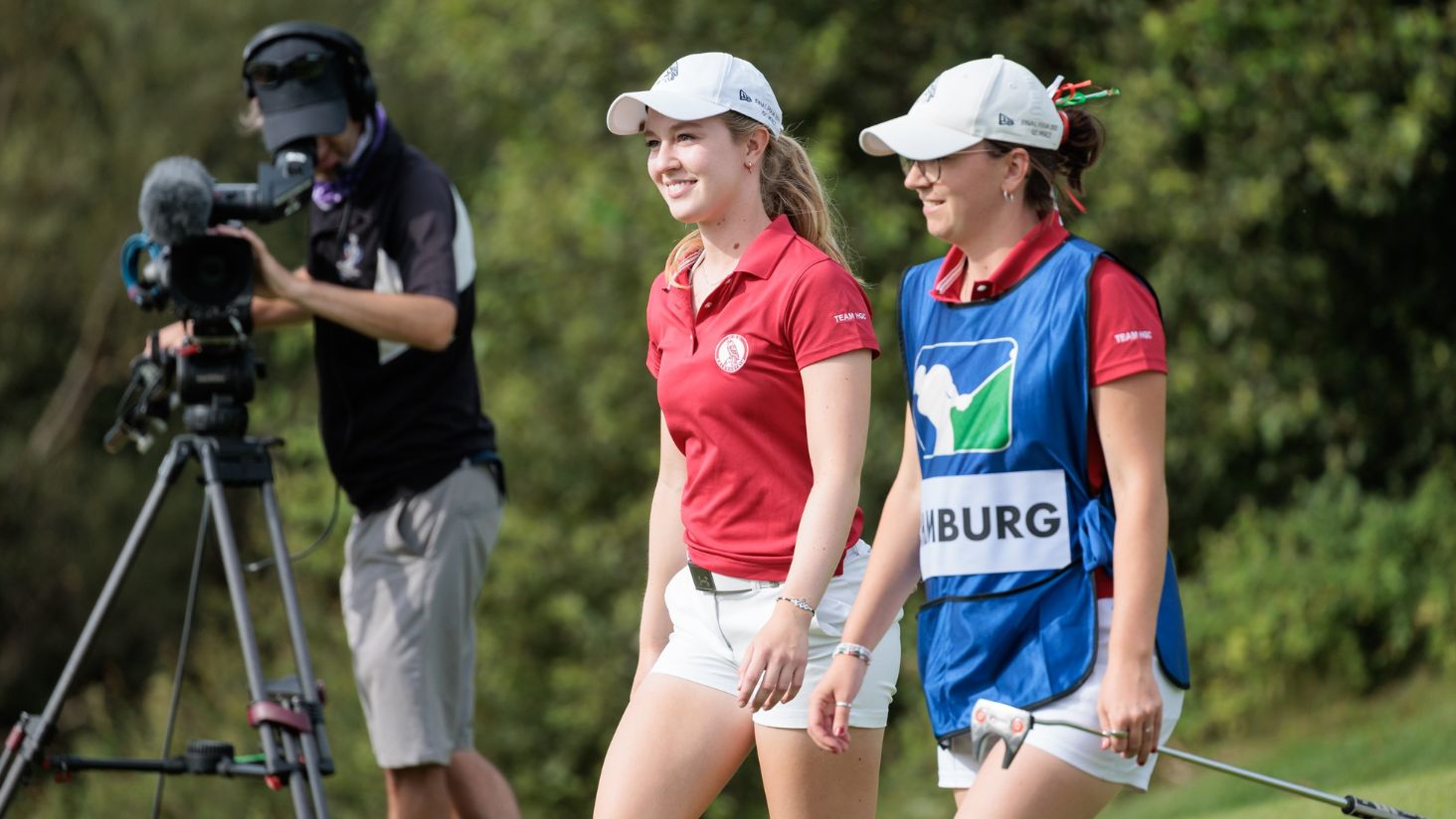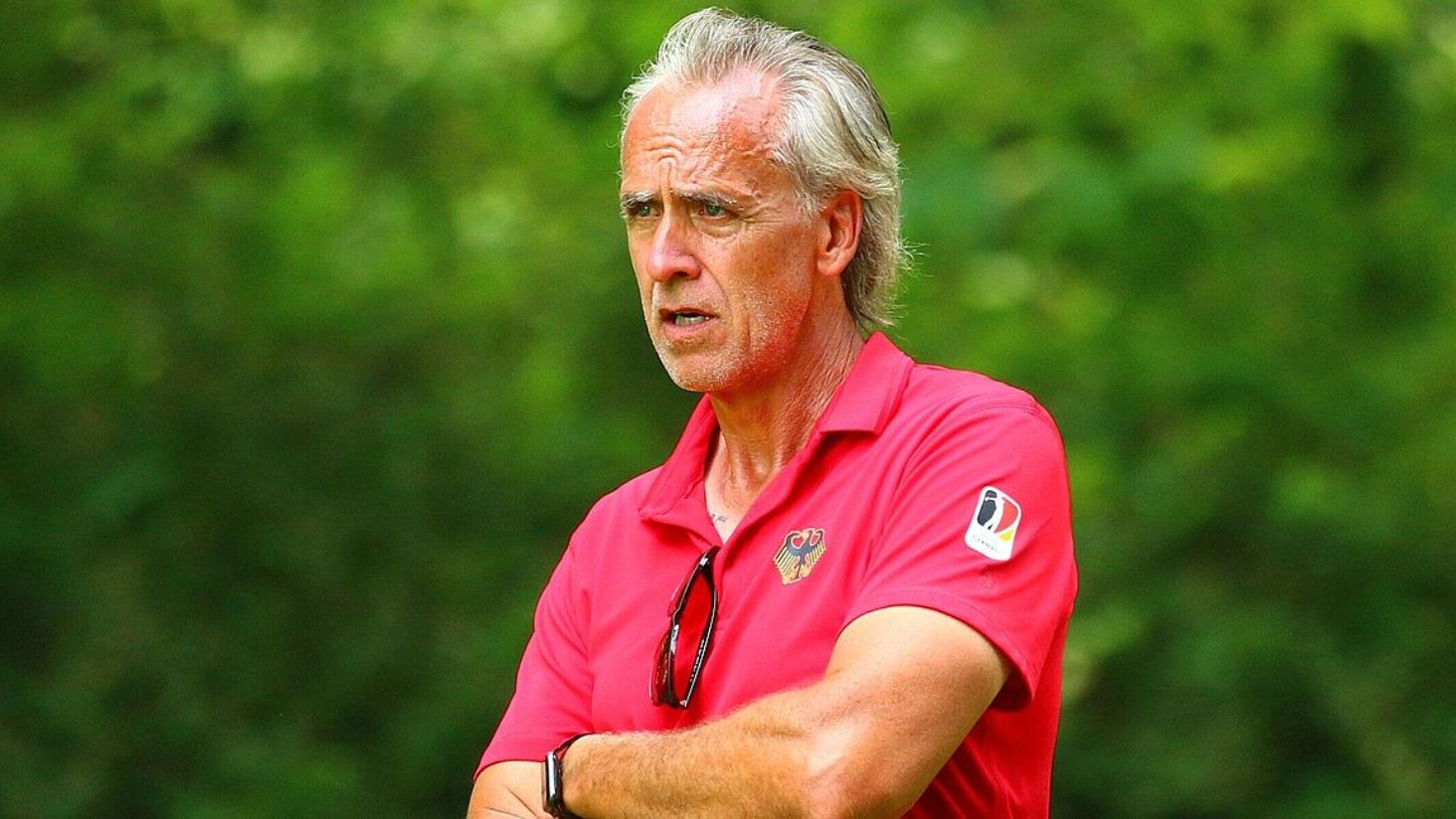
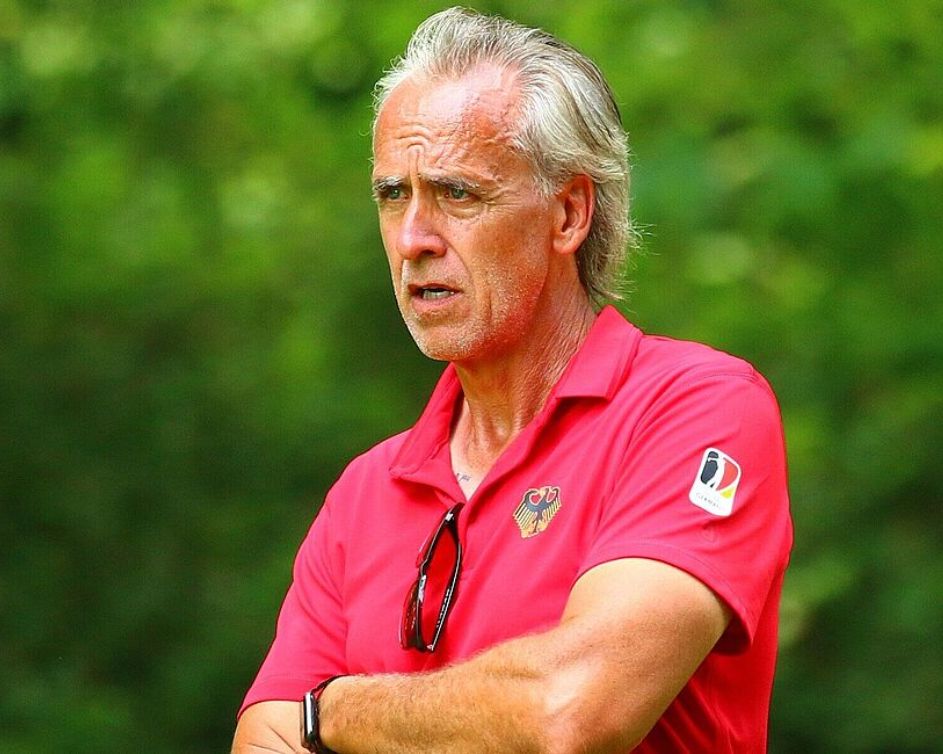
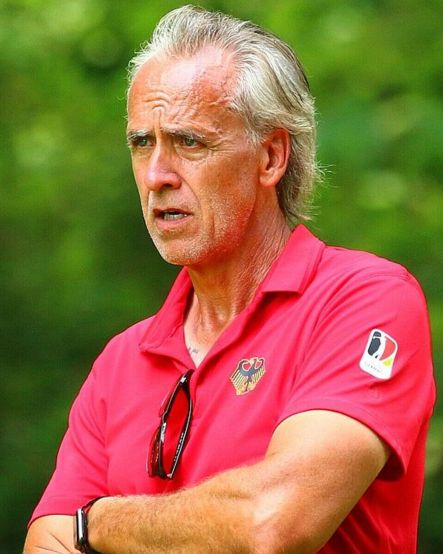
The Final Four is "a format that is the envy of Europe"
National coach Christoph Herrmann on the development of the German Golf League, the Final Four and the successful integration of the associations.
Christoph Herrmann is head national men's coach at the German Golf Association. The DGL editorial team spoke to the 57-year-old from Munich about the development of the German Golf League, the Final Four, the successful integration of the associations and more.
National coach Christoph Herrmann on the German Golf League
Question: Hello Mr. Herrmann, where can we reach you right now?
Christoph Herrmann: Hello, I'm currently in Ireland at the European Men's Team Championships in beautiful Killarney. We are fighting and trying to do everything we can in the last few days of the championships to achieve a good result for the German men's national team.
Question: What's on your calendar for August 2-3?
Christoph Herrmann: I believe that the entire German competitive golf scene and all sports fans are already looking forward to the national golf highlight at Golfclub München-Riedhof. The Final Four is this weekend. The four best German men's and women's club teams will determine the 2025 German champions. Of course I'll be there - for the second time on Sunday afternoon as a commentator on the Sky broadcast. This time, the exciting final will be available both on Sky and as a live stream on deutschegolfliga.de and Sport1. The high level of viewer interest last year has motivated the media representatives to further expand their involvement - great.
Question: The German Golf League has been around since 2013. How do you see the development of the DGL during this time in terms of the level of play?
Christoph Herrmann: The DGL has been of a very high standard right from the start. Successful top players such as Sophia Popov, Leonie Harm or protagonists such as Nicolai von Dellingshausen, Max Kieffer and, a little later, Matti Schmid and Alex Försterling were stars from the very beginning and later became Olympians and Tour winners. The density of performance, especially at the top clubs, has continued to increase since then and the targeted, increasingly professionally structured training, which is now of course organized all year round, has given German competitive golf as a whole a major boost. Esther Henseleit was part of the successful Falkenstein women's team for many years before her silver medal in Paris made her a symbol of the Vision Gold, which she almost turned into reality and for which the DGL was and still is a cornerstone. The development at the top has gone on and on, so that spectators can look forward to excellent, top national golf at an international level in 2025 and certainly successful German professionals of the future. As the people in charge, we naturally also hope that this will have an impact on positive developments in young talent and in the lower levels of the league. Without breadth there is no top and vice versa.
Question: The DGL is getting younger and younger. How do you assess the opportunities that the DGL offers very young, ambitious talents?
Christoph Herrmann: In clubs that play at the top level in all age groups, it is certainly important to pay a little attention to the young top talents. Anyone who plays in several youth teams at the club, competes in the women's or men's team at national and DGL level, plays in the youth national cup for their LGV and is perhaps even in the national team and then possibly also competes in European team championships, must certainly be well advised and supported in order to reconcile the demands that everyone places on these athletes with their own development and career interests as an individual player. It is important that the officials and coaches responsible for performance management really focus on the player. This is difficult for some in view of the funding invested or understandable self-interests. In principle, however, the DGL offers an exciting, sporting competition over a large part of the season. The game is very competitive. You first have to qualify for the teams and then perform under pressure. This teaches young players a lot of things that cannot be simulated in daily range training. In this respect, the DGL is invaluable for our young talents.
Question: There are now numerous former Tour players and Teacher of the Year coaching DGL teams - and not just in the 1st Bundesliga. How have the level of training and the number of applicants to become a Fully Qualified PGA Professional developed in recent years and how much does this influence the level of coaching of DGL teams in the lower leagues?
Christoph Herrmann: The number of trainees in the PGA of Germany's teaching professional options has fortunately stabilized again. Some former top players have already successfully made the transition into the coaching profession. Nicole Gögele and Esther Poburski, two former tour players, have also joined Golf Team Germany as national coaches this year. Recently, there has also been an increase in PGA training graduates who were outstanding DGL players, such as Anastasia Mickan and Constantin Unger. The experienced top coaches and Teachers of the Year of the past, such as Heiko Burkhard, Ian Holloway and Christian Lanfermann, have always made their mark with their teams in the DGL and have also provided impetus for PGA and DGV coach training in prominent positions. Coaching top teams also thrives on experience. The fact that such experience is passed on here is good for the overall standard of German golf coaching. Golf is still young as an Olympic competitive sport and learning is therefore always necessary.
Question: You have mentioned a few names. Nicolai von Dellingshausen, Yannik Paul, Nick Bachem for the men, Esther Henseleit, Alex Försterling and Helen Briem for the women - all of them have a DGL past and are now Tour champions. What can the DGL give or teach young, ambitious golfers on their way to becoming a Tour pro?
Christoph Herrmann: Competitive sport has its central virtues. Hard work pays off; I have to do something to get better. If you fall down, you get up again, maybe think for a moment and try again. In the emotion of team sport, development is clearly catalyzed. This is exactly what young players experience first in their youth teams, then in the DGL and some also in the LGV or the national team. The motivation that comes from this keeps players in the sport even after setbacks or failures. The road to the top is a long one in our sport's diverse range of requirements and requires the ability to suffer and a willingness to make sacrifices. There is a huge reserve of energy in the team community.
The German Golf League as a springboard
Question: What is the connection between the increasingly professional coaching in the DGL and the German Golf Association's Vision Gold? What exactly is the link between the clubs, the associations and Team Germany?
Christoph Herrmann: Successful development is difficult without successful interlinking and intensive cooperation between the individual departments involved in promoting young players. Everyone involved is obliged to do this. This has been more than clearly recognized everywhere and the will, the opportunity and the ability to work together have become much better, especially thanks to the DGL. It remains a daily communicative challenge - here, too, it is always important to keep the player at the center of attention and to drive their development forward together, without creating phases in which many pull on the player, but in different directions and progress thus comes to a standstill.
Question: Where does the DGL stand as a league system compared to other European leagues? Are there any similarly large formats elsewhere?
Christoph Herrmann : The league format is a system that, without exaggeration, is the envy of the whole of Europe. The necessary cooperation between clubs and associations is not possible elsewhere. In particular, the fact that teams of a comparable level meet repeatedly over the course of the season on different pitches is largely unprecedented. We can certainly be proud of that.
Question: What have been your most emotional moments with the German Golf League so far?
Christoph Herrmann: Oh, I personally have many. The first Final Four in Winston in 2013 with the legendary floodlit tee-off was unforgettable for me. I was the coach of the ladies from Munich Golf Club at the time and we beat the favorites from St. Leon-Rot in the play-off, with whom I had been German champion the previous year. I'll never forget that thing and whenever I see the pictures and videos or meet someone from that team, I immediately think of that evening in Winston. Pure emotion - that connects. Now I have some emotional distance because I no longer coach a DGL team. But being at the start as a "reporter" is also very exciting for me. I really root for the players and fellow coaches.
Question: How do you tell friends who don't yet play golf why they should definitely experience the Final Four?
Christoph Herrmann: I don't like to be a missionary. Anyone who has the usual prejudices against golf will not be convinced. But if you have an open mind for our great sport and perhaps a little curiosity is already fighting its way through the skepticism, you can experience highly attractive golf at the Final Four thanks to the comprehensible match play format and the action associated with it. The emotions in the competitions between the teams certainly exceed the usual expectations of our otherwise rather quiet sport. Watching golf is probably nowhere more attractive.
Question: You are from Munich and your 58th birthday is three days before the Final Four at Riedhof. How and with whom are you celebrating and what other connections do you have to the Bavarian capital?
Christoph Herrmann: You are incredibly well informed - that flatters me and almost gives me a feeling of celebrity that a coach in the sport of golf, which is probably still marginalized by the media, doesn't have. But that is changing. The city in which you were born always has some kind of emotional significance. My brother still lives in Munich and I still have a few friends there. I love the mountains and therefore always enjoy being there with my family, who I always successfully show the beauty of my original surroundings, even though we now enjoy living in my wife's home in Münsterland. The question is a direct hit in that I will be spending my birthday with my family in my birthday present, a small caravan, at Staffelsee. You can't get more at home than that in the run-up to the Final Four. I'm really looking forward to it.
Question: Last year, the ladies from Hamburg and the men from St. Leon-Rot won gold at the Final Four. Your tip: Which teams will win this year? Who are the favorites?
Christoph Herrmann: That's very difficult to predict. There have been some really big surprises in the past. That's what makes the Final Four so special. The ladies from St. Leon-Rot are once again playing a very strong season and will probably have a great chance of reaching the final. The reigning champions from Hamburg have not had a completely flawless season and will have to battle it out with the home-strong Wannseer and Ian Holloway's Hubbelrath players on the last matchday in Berlin to prove that they will also go through Falkenstein again in 2025. And who would want to underestimate Stuttgart with the German high-flyer Helen Briem, who we hope can be there. In the men's competition, the paperwork suggests a gigantic final between the German champions St. Leon-Rot and the men from Hubbelrath - in other words, a repeat of last year's final. Hubbelrath is peppered with national players and will certainly want to make things much more difficult for the industry leaders than they ultimately did in 2024. But first, both have to do their homework. The DGL specialists from Hösel and the strong men from Munich are absolutely capable of exploiting even the slightest weakness and landing a final four coup of their own. It will definitely be a remarkable golf event.
Thank you very much for the interview!
The interview was conducted by Thomas Kirmaier. Provided by the German Golf League.




Release date
29 Jul 2025
photos
Men's national coach Christoph Herrmann was already present at the first Final Four of the German Golf League. (Photo: DGV/stebl)

